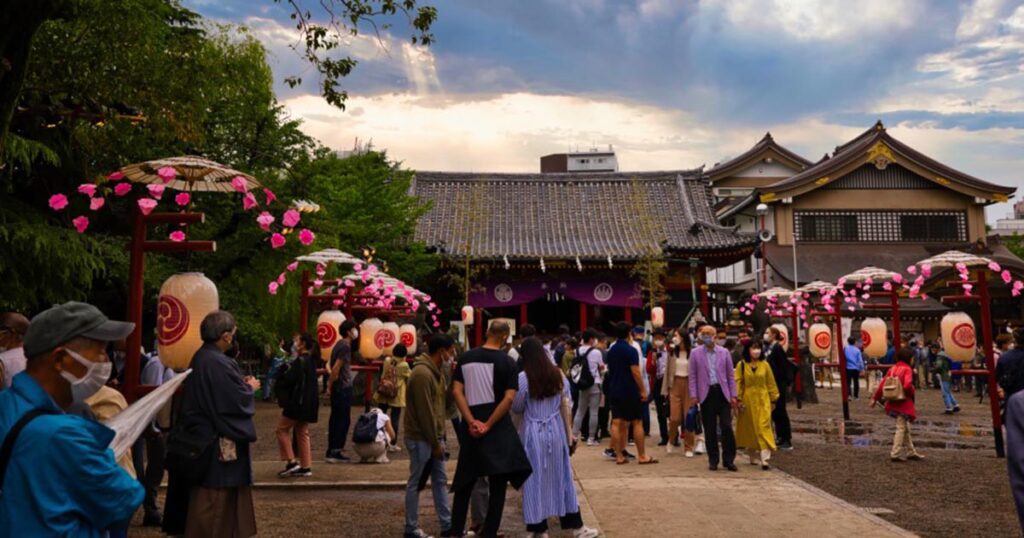Asakusa Sanja Matsuri is one of the three biggest festivals in Tokyo. The festival is scheduled to be held on May 19-21 (Friday-Sunday), 2023, at Asakusa, and more than 3 million visitors are expected to visit Asakusa during this festival.
Table of Contents
Introduction:
What is the Sanja Matsuri festival?
The Sanja Matsuri festival is the biggest festival in Asakusa. It usually takes place in the third week of May every year and lasts for three days.
‘Sanja’ means three, and ‘Matsuri’ means festival in Japanese.
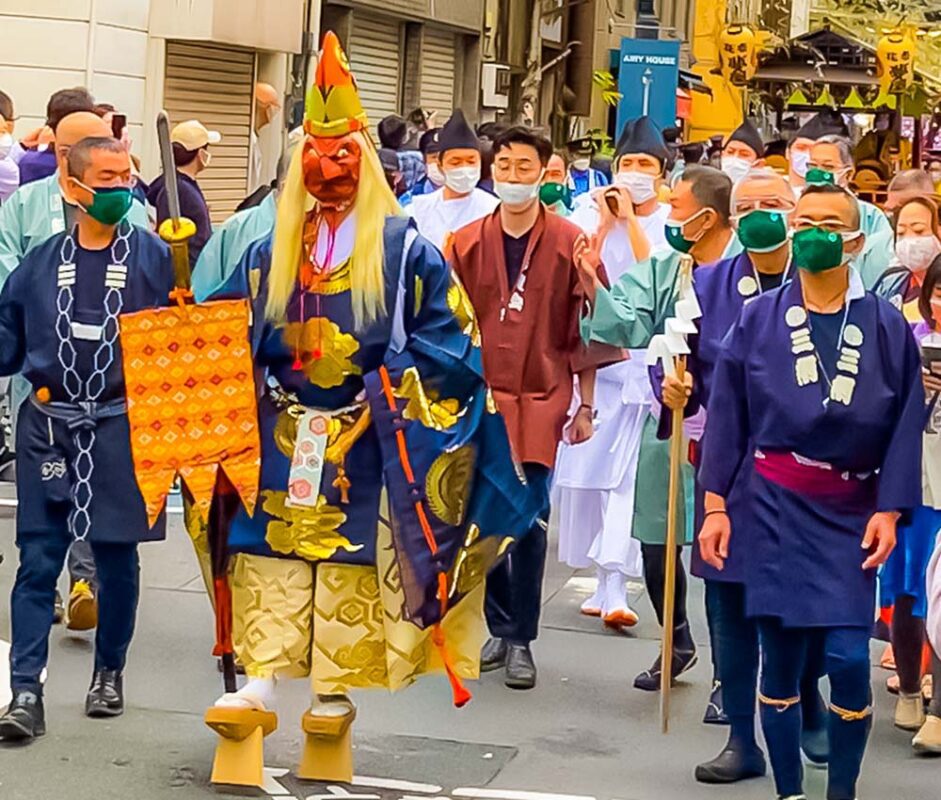
The shrine was dedicated to two brothers, Takenari and Hamanari Hinokuma, and their friend, Matsuchi Hajino, for their contribution to establishing Sensoji Temple in 628.
The three men became famous as ‘Sanja-Sama.‘ Local people named the festival Sanja Matsuri in their honor.
Sanja Matsuri festival is also one of the biggest festivals for Shintoism in Tokyo’s 23 Special Wards.
The three biggest festivals are Sanno Matsuri at Hie Shrine, Sanja Matsuri at Asakusa Shrine, and Kanda Matsuri at Kanda Shrine.
History:
According to history, two brothers, Hinokuman Hamanari and his brother Hinokuma Takenari, who were fishermen, were fishing the Sumida river in the early morning on March 18, 628. They found a Statue of Bodhisattva Kannon(female figure Buddha) in their fishing net.
But a wealthy man Hajino Nakamoto heard what two fishermen caught in the Sumida River. So he went to them and preached Buddhism to the two brothers.
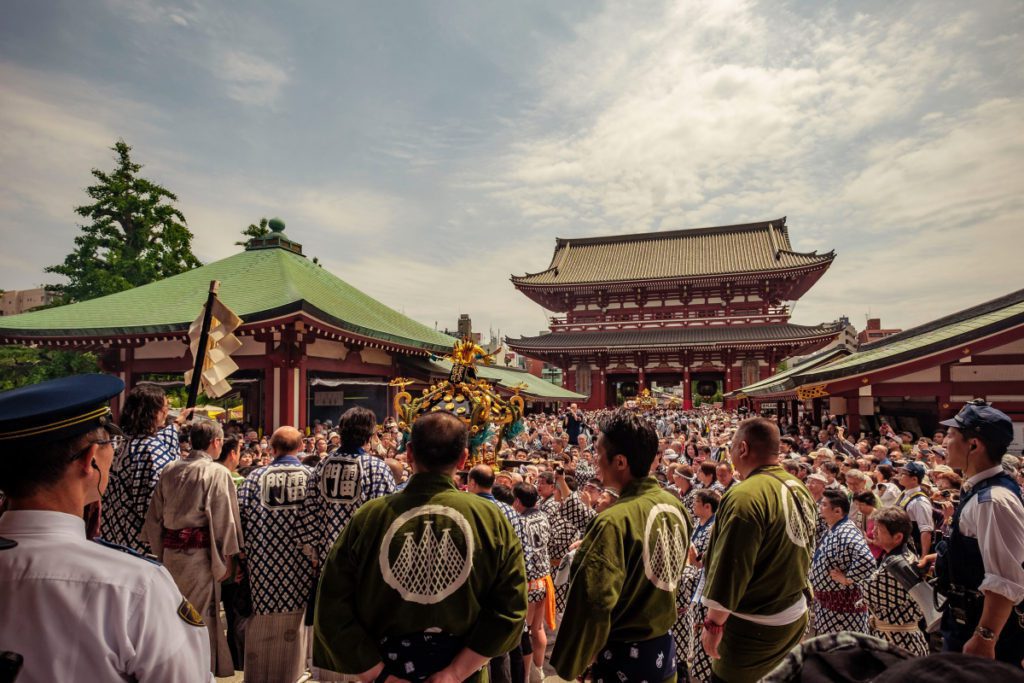
By hearing from Hajino Nakamoto, two brothers accepted Buddhism.
Later, the wealthy man and two fishermen devoted to Buddhism and kept the statue in a small temple, and it is now Asakusa Sensoji Temple.
It is essential to mention that Sensoji Temple is the oldest temple in Tokyo.
Later, the Sanja Matsuri originated after Shogun Tokugawa Iemitsu built Asakusa Shrine in 1649.
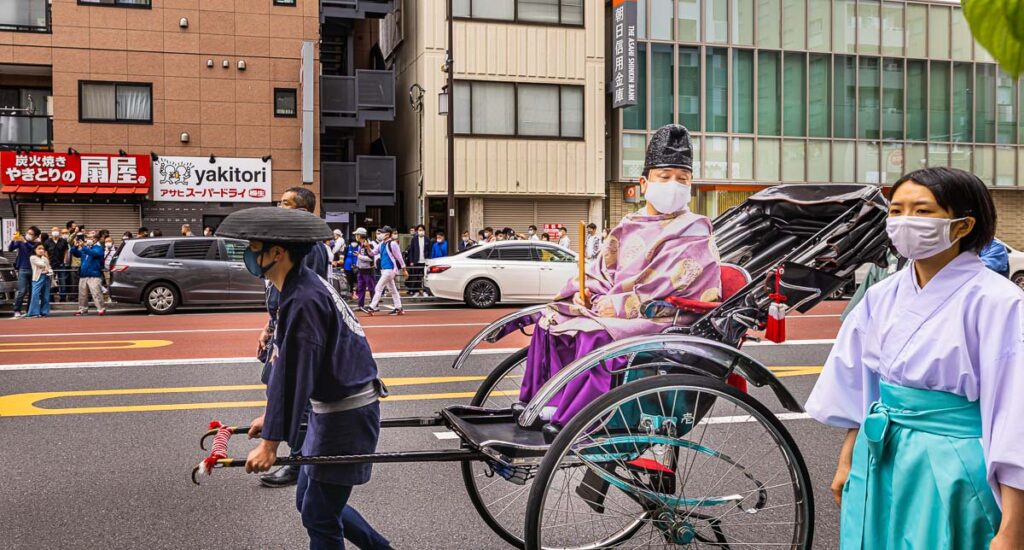
Besides, Asakusa is a traditional Japanese area that flourishes in Japanese culture. Millions of tourists visit every year to enjoy traditional Japanese culture.
Especially during the Asakusa Sanja Matsuri festival, visitors from different countries visit Asakusa.
It is worth mentioning that Asakusa Shrine was selected as an Important National Cultural Asset in 1951.
Sanja Matsuri 2023:
May 19 Friday-21 Sunday
Sanja Matsuri festival is held on the third weekend of every May. It lasts for three days and attracts around 2 million people.
Preparation:
The festival committee takes preparation beforehand. First, the biggest portable shrine is clean-up.
In addition, the portable shrine is kept at subway metro Ginza Asakusa Station for public display around one month before.
Schedule:
Sanja Matsuri lasts for three days. It usually starts on Friday and finishes on Sunday night.
But, the actual preparation for the festival starts on Thursday. Then, Friday at noon, around 13:00 massive parade begins.
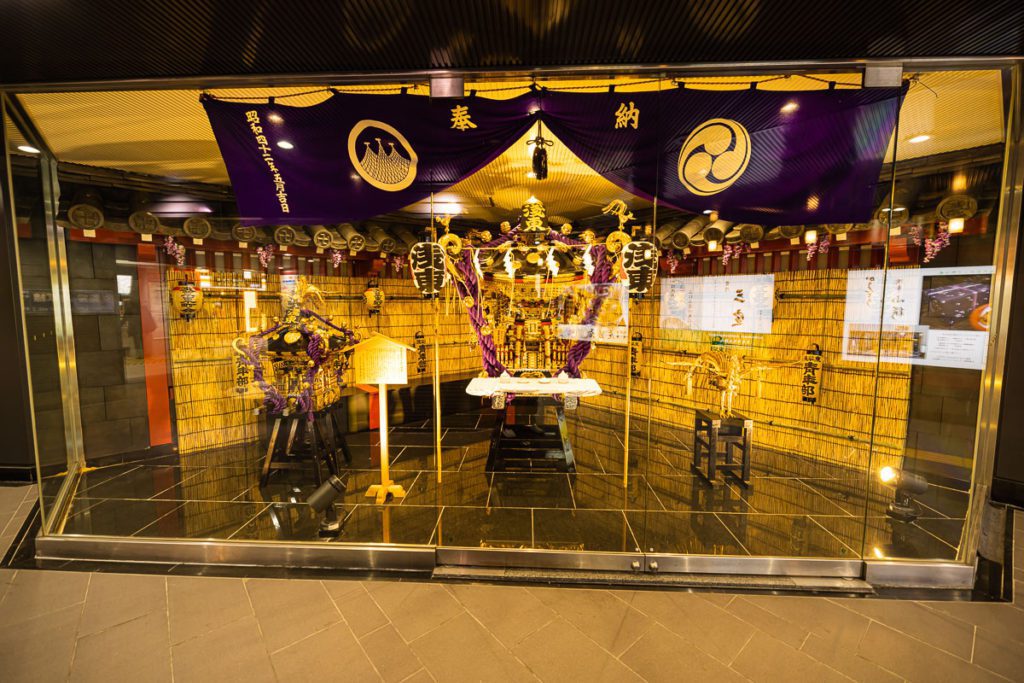
Hundreds of people dance during the parades wearing traditional dresses and costumes.
On Saturday, around 12:30, 100 small portable shrines from all 44 districts of Asakusa start parades on the streets.
Finally, on the third day, Sunday, three main portable shrines depart at 6:00 from the Asakusa Shrine and come back around 18:00 after roaming the Asakusa districts.
Friday:
Asakusa Shrine’s main priest performs a ritual by inviting the spirits of the Sanja-Sama into the three main portable shrines(mikoshi) the night before Friday.
On Friday, the Daigyoretsu Parade starts at 13:00.
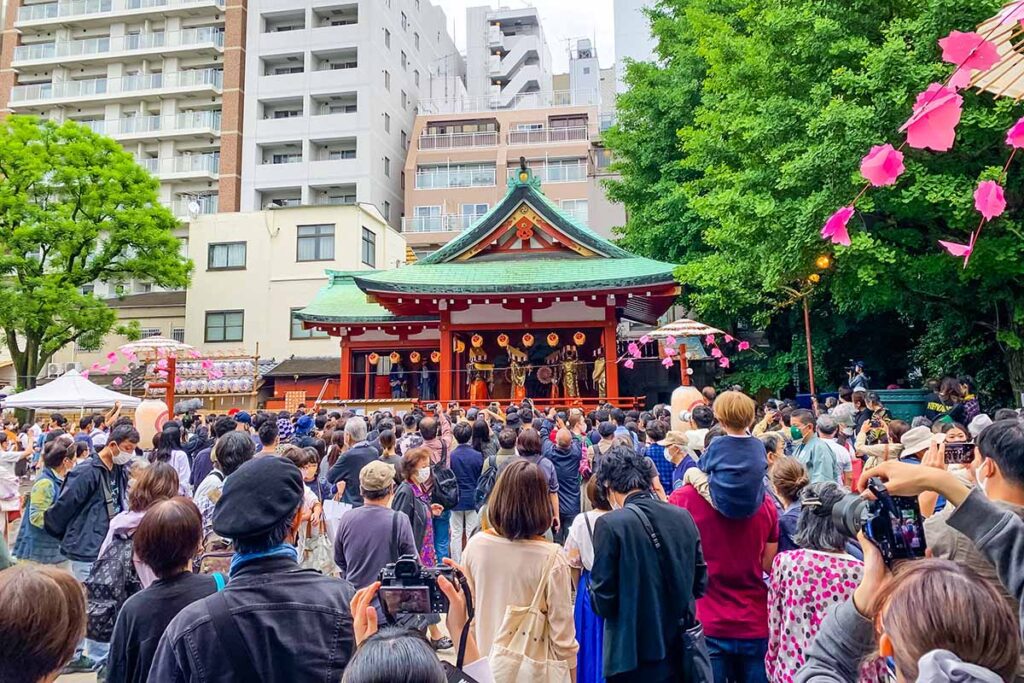
For prosperity, a short Shinto ceremony is performed at Asakusa Shrine, and a group of people performs the Binzasaramai dance.
Binzasaramai dance is one kind of traditional Japanese dance that a group of people performs together. They wear ritual costumes, hang drums on their necks, and play one type of bamboo-made instrument.
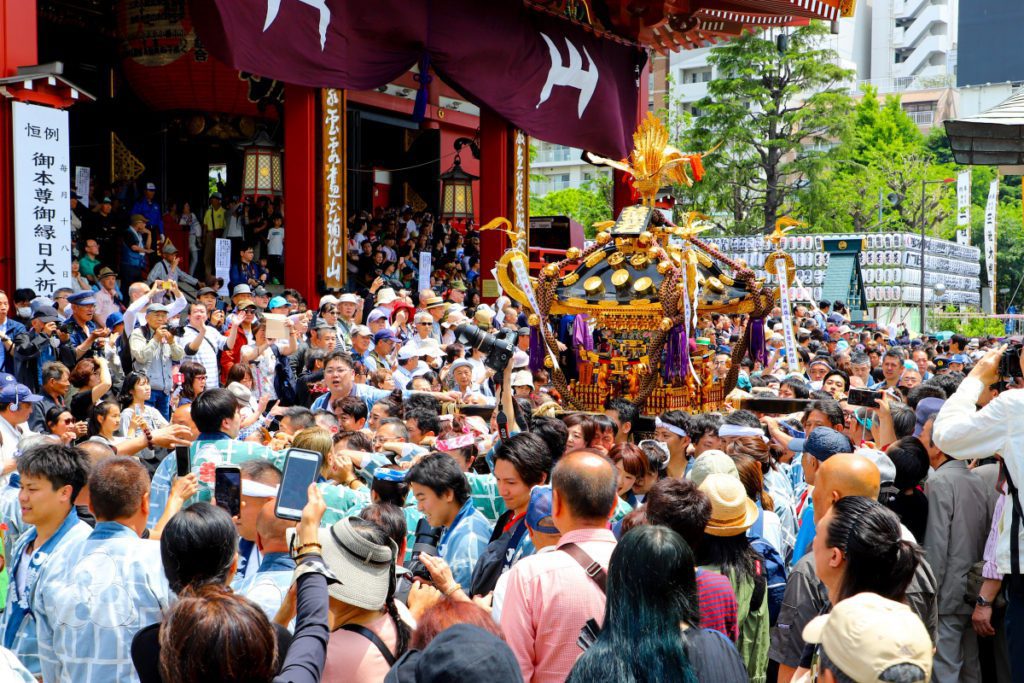
After the dance, dressing up in traditional costumes, temple priests, city officials, geishas, musicians, and dancers parade around Asakusa.
In addition, six portable shrines from six main districts parade the streets in the afternoon.
Asakusa becomes festive, and people roam. People eat and drink in the streets during the Asakusa Sanja Matsuri festival.
Saturday:
About 100 small portable shrines come out around noon on the second day. People carry these shrines in the streets.
About 60 people carry a portable shrine, shouting in unison to cheer each other.
In addition, small portable shrines are also joined at the parade for children of different ages. A taiko drum is played, mounted in a cart while being wheeled in the street.
It is a day for everyone!
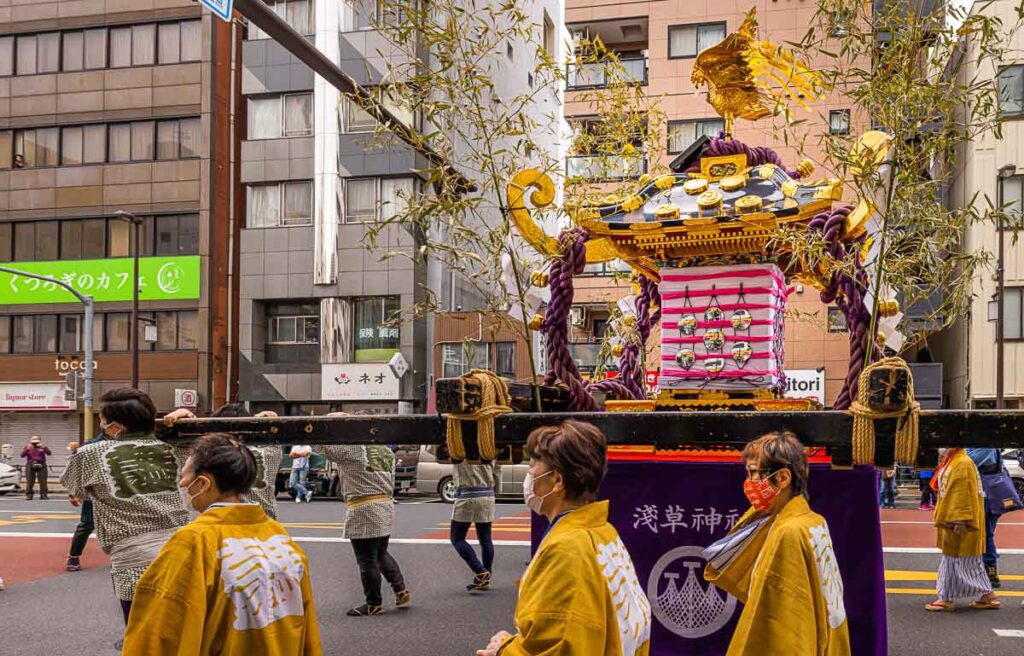
Portable shrines make a movement known as Tamafuri, being bounced up and down or thrown from side to side.
The Tamafuri movement has hundreds of years of tradition. The move is a blessing of plentiful harvests, crops, and fish.
Besides, it is also believed recovering from illnesses.
Later the teams and local people get together for drinks until midnight.
Sunday:
The last day of the Sanja Matsuri festival begins early in the morning, around 6:00, at Asakusa Shrine.
All of the members of the teams from the previous day arrive to carry three big portable shrines. Each portable shrine weighs about a ton.
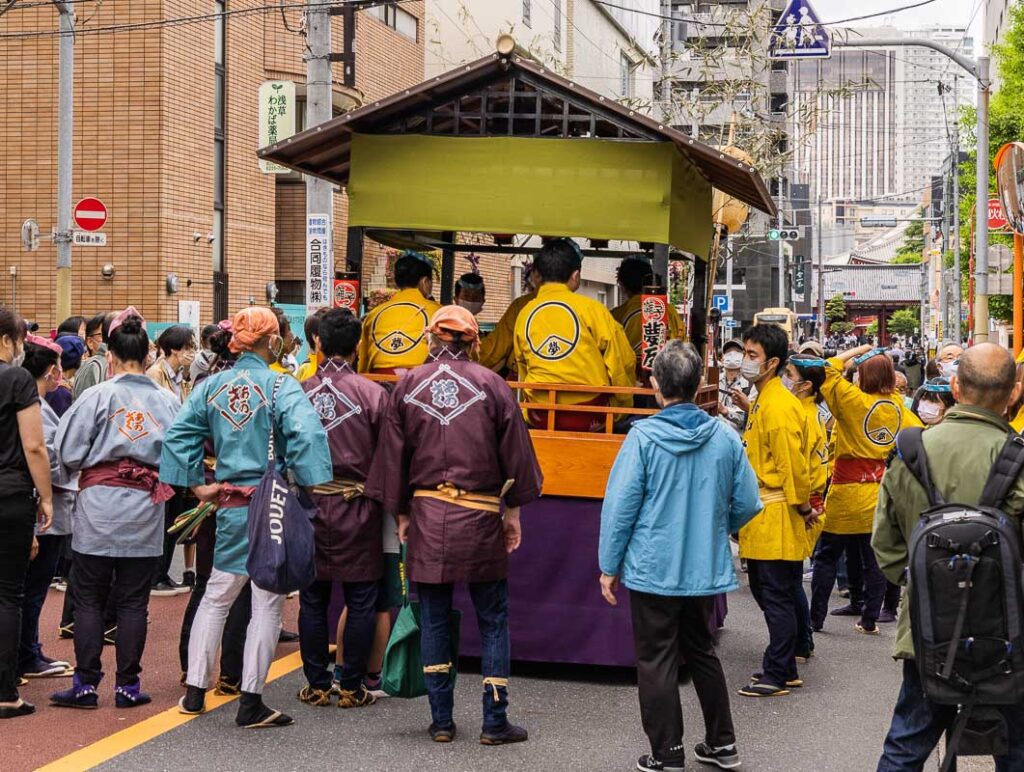
Three large portable shrines start going out from the shrine’s premises around 8:00 and come back around 18:00. These three large portable shrines roam the different streets of Asakusa the whole day.
Dress Code:
The people who carry mikoshi or portable shrines wear traditional Japanese dresses, a thicker Hanten. Underneath, they wear a traditional Japanese undergarment, fundoshi.

Usually, each mikoshi team wears a different type of Hanten to differentiate themselves from other groups.
Wear traditional tabi, a kind of Ninjas boot, and a headband(hachimaki).
Belief :
Asakusa Sanja Matsuri festival is a religious festival. So through these actions, the people expect good luck from the three gods.
In short, people believed that the holy gods seated in the shrines blessed the neighborhoods.
However, only experienced and respected people are chosen to stand on the bars with the shrines.
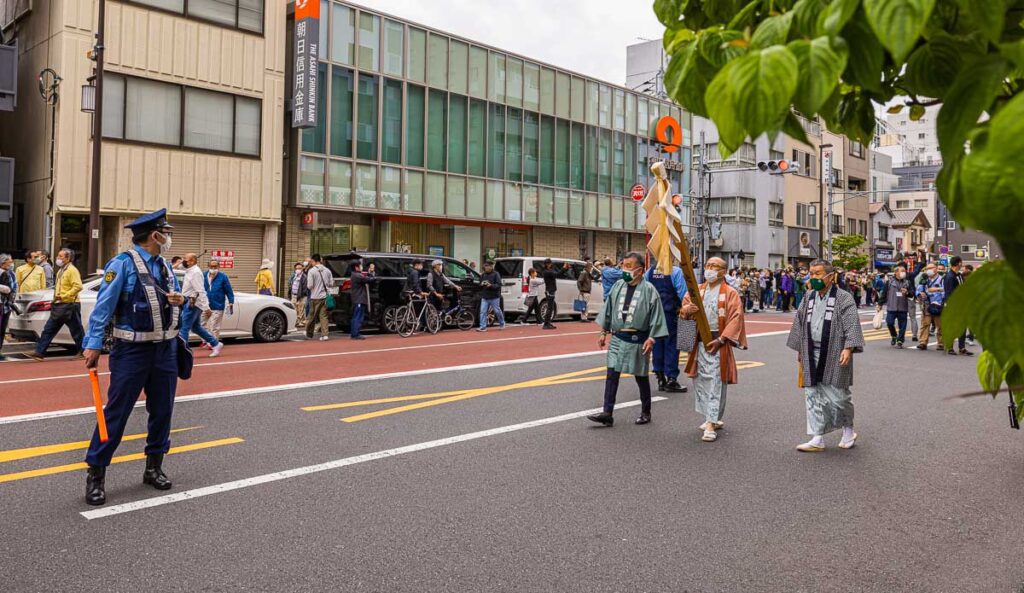
It is good to mention that these three main portable shrines are miniature of the Asakusa Shrine. These potable shrines are very expensive.
According to in 2008 account, each portable shrine cost was 40 million Japanese Yen and weighed about one ton.
Each portable shrine is tightly tied with ropes on the 4 bars, front two and back two bars. Interestingly, to carry each portable shrine, around 40 persons are required.
Food & Stalls:
During the Sanja Matsuri, the atmosphere of Asakusa becomes energic. As a result, locals and tourists flood the whole area.
Japanese traditional drums, whistles, flutes, and chanting are heard throughout Asakusa.
But, the primary attractions of the festival are the three Asakusa Mikoshi (portable shrines).
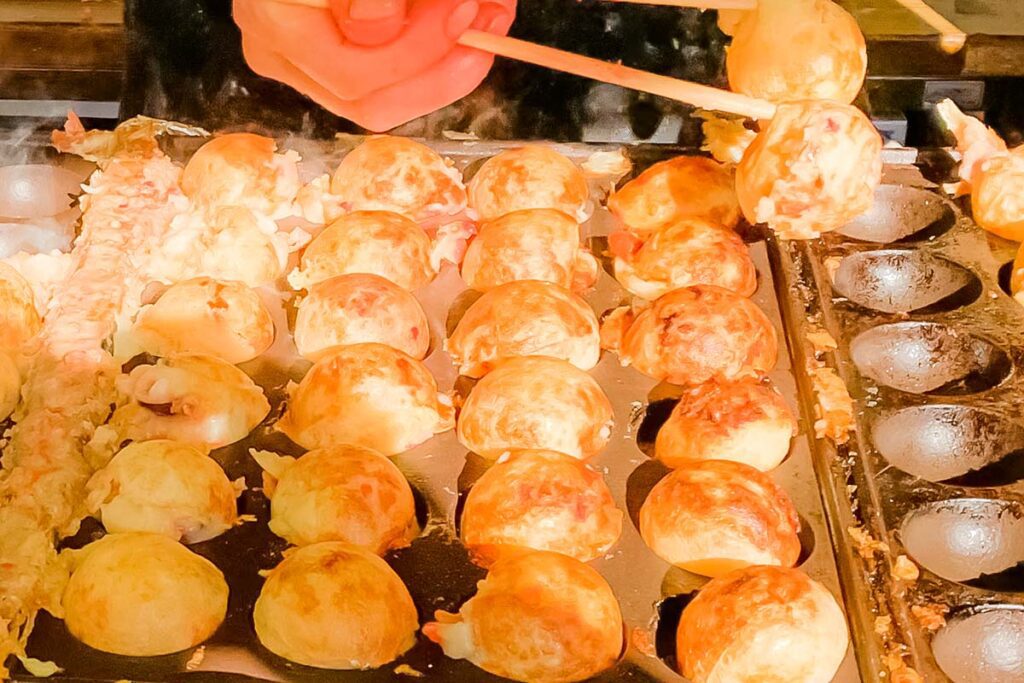
Numerous stalls are set up around the Sensoji Temple and Asakusa Shrine. These stalls sell food and drinks.
However, most of the stalls prefer selling easy festival Japanese dishes such as potato fries, banana chocolates, grilled seafood, grilled meat, yakisoba, yakitori, and hot drinks.
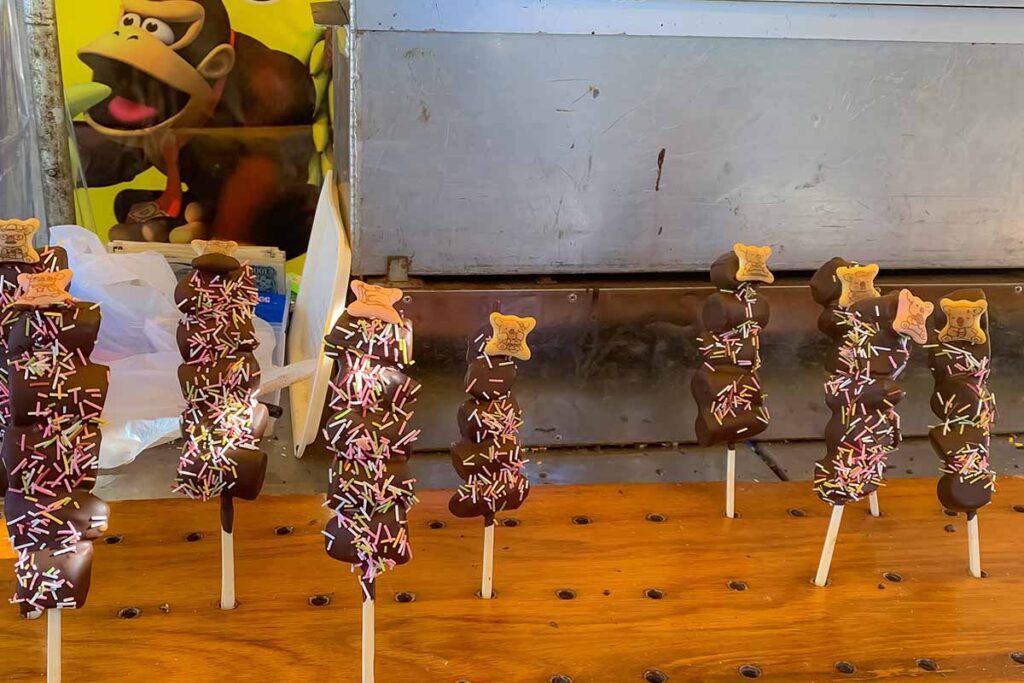
In addition, Nakamise Shopping Street is open. So people can get regular food and souvenirs as well.
One of the Edo Period sweets, Kibi-Dango, is very popular.
Asakusa Kibi Dango Azuma sells Kibi-Dango. One famous shop sells such sweets shops at Nakamise Shopping Street, where tourists keep queuing to test this Edo Period Sweet.
The sweet is made from millet powder and sweet rice and coated with soybean flour.
Recommend:
During the Sanja Matsuri, all kinds of vehicles are stopped near Sensoji Temple. Besides, the road in front of the Kaminarimon is entirely blocked.
So cycle or Go-karting tours are not suitable. Usually, a private tour with a local guide is enjoyable so that the guide can take pictures and explain all the things better.
Final word:
The Asakusa Sanja Matsuri festival is a traditional Japanese religious festival. It is the easiest way to enjoy Japanese culture by joining in the celebration.
Above all, it is a rare chance to enjoy Japanese culture in a Japanese area like Asakusa. Sanja Matsuri is held only once a year.
Therefore, no one should miss the festival at all.
Access:
Station: Asakusa Station
1)Tokyo Metro Ginza Line or the Tobu Skytree Line or Tsukuba Express.
A 5-minute walk from Asakusa Station (Exit 3)
2) Toei Subway Asakusa Line
A 7-minute walk from Asakusa Station (Exit A5)
Phone number: +81-3-3842-0181
Address:
Asakusa Jinja, 2 Chome-3-1 Asakusa, Taito City, Tokyo 111-0032, Japan
Official Website:
Asakusa Jinja
Book hotel in Asakusa:
